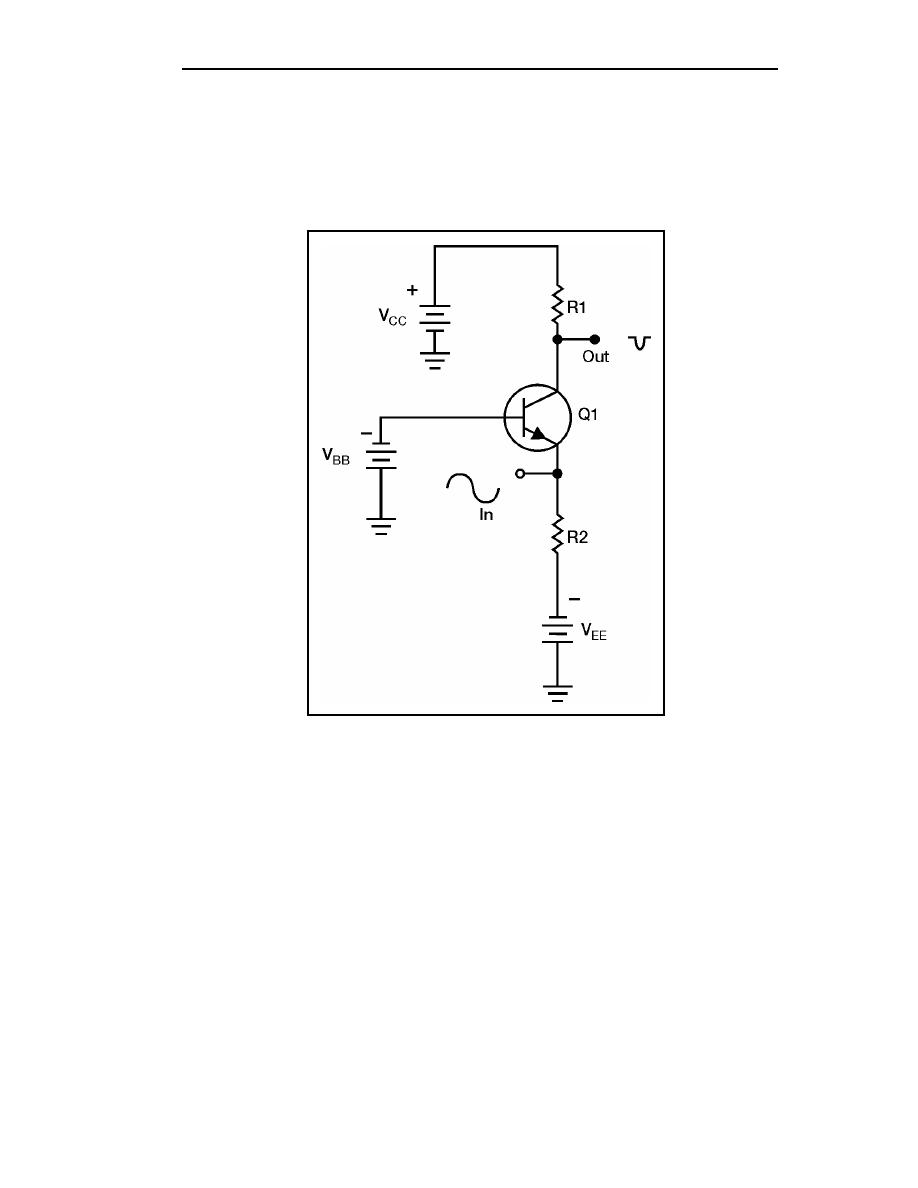
TC 9-62
also has the worst fidelity. The output signal bears very little resemblance to the input
signal.
5-33. Class C amplifiers are used where the output signal need only be present during
part of one-half of the input signal. Any amplifier that operates on less than 50 percent of
the input signal is operating class C.
Figure 5-6. Simple Class C Transistor Amplifier
AMPLIFIER COUPLING
5-34. Remember, almost every electronic device contains at least one stage of
amplification. Many devices contain several stages of amplification and therefore several
amplifiers. Stages of amplification are added when a single stage will not provide the
required amount of amplification. For example, if a single stage of amplification will
provide a maximum gain of 100 and the desired gain from the device is 1,000, two stages
of amplification will be required. The two stages might have gains of 10 and 100, 20 and
50, or 25 and 40. The overall gain is the product of the individual stages (10 x 100 = 20 x
50 = 25 x 40 = 1,000).
5-35. Figure 5-7 shows the effect of adding stages of amplification. As stages of
amplification are added, the signal increases and the final output (from the speaker) is
increased.
5-36. Whether an amplifier is one of a series in a device or a single stage connected
between two other devices (top view, Figure 5-7), there must be some way for the signal to
enter and leave the amplifier. The process of transferring energy between circuits is known
5-8
TC 9-62
23 June 2005


 Previous Page
Previous Page
